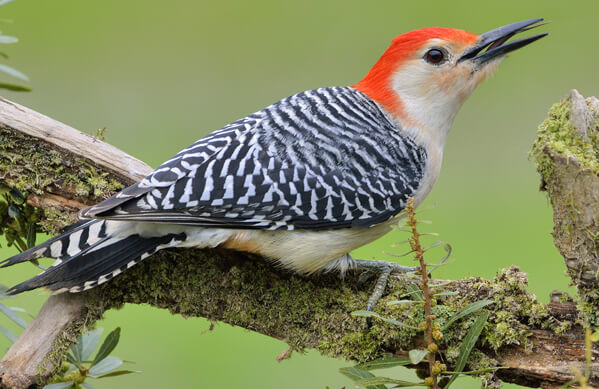Discovering Woodpeckers in Florida: Variety Diversity and Natural History
Discovering Woodpeckers in Florida: Variety Diversity and Natural History
Blog Article
Unveiling the Tricks of Woodpeckers: Actions, Habitat, and Much More
Woodpeckers, with their one-of-a-kind actions and specialized adjustments, have actually lengthy interested researchers and nature lovers alike. By discovering the secrets surrounding woodpeckers' behavior and environment selections, a much deeper understanding of these bird wonders emerges, using a glimpse into their fascinating globe.
Woodpecker Actions Insights
In checking out woodpecker actions, a remarkable screen of specialized skills and adaptations arises, clarifying their remarkable ecological particular niche - Woodpeckers in Florida. Woodpeckers, understood for their unique drumming on trees, possess a selection of behavioral traits that add to their survival and success in their atmosphere. One essential behavior is their drumming, which offers multiple purposes such as interaction, establishing region, bring in mates, and situating food resources. This rhythmic pecking also showcases their exceptional stamina and endurance, as they can hammer away continually at broadband without causing harm to themselves.
Moreover, woodpeckers exhibit a special feeding behavior defined by their capacity to extract bugs from tree bark utilizing their specialized beaks. Their long, barbed tongues help in catching target, while their strong neck muscle mass give stability and precision throughout pecking motions. This feeding technique permits woodpeckers to access covert insect larvae and remove them with impressive efficiency.
Environment Preferences and Option
What aspects affect the environment preferences and selection of woodpeckers? One critical factor influencing woodpecker environment choice is the availability of appropriate nesting websites. Woodpeckers usually prefer woodlands with a mix of fully grown trees that give ample opportunities for cavity excavation.
Additionally, woodpeckers reveal a choice for environments with a plentiful supply of food sources. They are mostly insectivorous, eating beetles, ants, larvae, and other insects located in worn out timber or tree bark. Woodpeckers tend to favor woody areas with a varied insect populace to meet their nutritional requirements.
Furthermore, the presence of dead or worn out trees is one more essential consider woodpecker environment choice. These trees not only supply food sources yet likewise offer ideal substrate for dental caries excavation. Dead trees are necessary for the maintenance of healthy and balanced woodpecker populations, as they play an essential function in Related Site the woodpeckers' life cycle and environment dynamics.
Feeding Behaviors and Diet Make-up
Woodpeckers demonstrate a specialized feeding behavior concentrated on foraging for bugs within different habitats. In addition to insects, woodpeckers additionally consume tree sap, fruits, nuts, and seeds, adding selection to their diet regimen depending on the see this page season and accessibility of food resources.
The foraging strategies of woodpeckers are well-adapted to their arboreal way of life. Woodpeckers play a vital function in maintaining the wellness of woodlands by managing insect populations and assisting in the decay of wood.
Drumming Appears and Communication
Utilizing fast drumming noises on various surfaces, woodpeckers use an unique kind of interaction to indicate territory limits and attract friends. This drumming habits is not only a way of communication yet likewise serves as a means for woodpeckers to establish their visibility within a specific location. The strength, rate, and pattern of the drumming can communicate important details to other woodpeckers in the location.
Woodpeckers utilize drumming audios to reveal their visibility in an area and to warn off prospective intruders. The loud and repeated nature of the drumming works as a clear signal to various other linked here woodpeckers that the location is already asserted. This helps in minimizing conflicts and lessening physical confrontations in between people.
:max_bytes(150000):strip_icc()/GettyImages-1094628502-a831e9c1be004c05b057f488ff819127.jpg)
Survival Adaptations and Specialized Makeup

Conclusion
In conclusion, woodpeckers show special habits, such as drumming sounds for interaction, and have specialized anatomy for survival in their picked environments. Their feeding practices and diet composition better show their adaptability to numerous atmospheres. By understanding these facets of woodpeckers, researchers and conservationists can much better secure and preserve these remarkable birds and their environments.
Report this page